AMD Reveals Threadripper 2 : Up to 32 Cores, 250W, X399 Refresh
by Ian Cutress on June 5, 2018 11:05 PM EST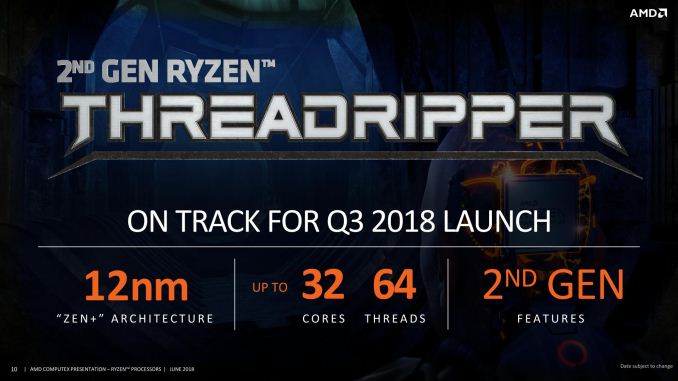
One of the surprises from AMD’s first year of the newest x86 Zen architecture was the launch of the Threadripper platform. Despite the mainstream Ryzen processors already taking a devastating stab into the high-end desktop market, AMD’s Threadripper offered more cores at a workstation-friendly price. For 2018, the next generation is going to be using AMD’s updated 12nm Zeppelin dies, as well as including a few new tweaks into the system including better boost and faster caches.
This article is still a work in progress, and will be updated as more news comes in.
AMD’s Zeppelin silicon has 8 cores, and the first generation Threadripper uses two of them to get to the top-SKU of 16-cores. Inside the CPU however, there are four pieces of silicon: two active and two inactive. For this second generation of Threadripper, called Threadripper 2 or the Threadripper 2000-series, AMD is going to make these inactive dies into active ones, and substantially increase the core count for the high-end desktop and workstation user.
At the AMD press event at Computex, it was revealed that these new processors would have up to 32 cores in total, mirroring the 32-core versions of EPYC. On EPYC, those processors have four active dies, with eight active cores on each die (four for each CCX). On EPYC however, there are eight memory channels, and AMD’s X399 platform only has support for four channels. For the first generation this meant that each of the two active die would have two memory channels attached – in the second generation Threadripper this is still the case: the two now ‘active’ parts of the chip do not have direct memory access.
This technically adds latency to the platform, however AMD is of the impression that for all but the most memory bound tasks, this should not be an issue (usually it is suggested to just go buy an EPYC for those workloads). While it does put more pressure on the internal Infinity Fabric, AMD ultimately designed Infinity Fabric for scalable scenarios like this between different silicon with different levels of cache and memory access.
Update: AMD has just published a full copy of their slide deck for the Threadripper 2 presentation. In it are a few interesting factoids.
| AMD Threadripper CPUs | |||||
| Threadripper 2 32-Core Sample |
Threadripper 2 24-Core Sample |
Threadripper 1950X |
Threadripper 1920X |
||
| Socket | TR4 (LGA) 4094-pin |
||||
| CPU Architecture | Zen+ | Zen+ | Zen | Zen | |
| Cores/Threads | 32 / 64 | 24 / 48 | 16 / 32 | 12 / 24 | |
| Base Frequency | 3.0 GHz | 3.0 GHz | 3.4 GHz | 3.5 GHz | |
| Turbo Frequency | 3.4 GHz (WIP) | 3.4 GHz (WIP) | 4.0 GHz | 4.0 GHz | |
| L3 Cache | 64 MB ? | 48 MB ? | 32 MB | 32 MB | |
| TDP | 250W | 250W | 180W | 180W | |
| PCIe 3.0 Lanes | 60 + 4 | ||||
| Chipset Support | X399 | ||||
| Memory Channels | 4 | ||||
- Both the 24-core and 32-core sample CPUs are clocked at 3.0GHz base and 3.4GHz all-core turbo, with the latter being a work-in-progress according to the company.
- The 32-core system was equipped with DDR4-3200 memory. This is notable because the Ryzen processors based on the same 12nm Zeppelin dies officially max out at DDR4-2933.
- The codename for the processor family is listed as "Colfax". This is the first we've heard this codename from AMD.
- Despite the high TDP, both CPUs used in AMD's demos were air-cooled, using AMD's Wraith Ripper Air Cooler
Also announced at the presentation is the state of play of motherboards. According to the motherboard vendors These new Threadripper 2000-series processors will have a peak TDP rating of 250W, which is much higher than 180W we saw on the 1950X. We have been told by partners that the 250W rating is actually conservative, and users should expect lower power consumption in most scenarios. Nonetheless, it was stated by several motherboard vendors that some of the current X399 motherboards on the market might struggle with power delivery to the new parts, and so we are likely to see a motherboard refresh. That is not saying that the current X399 offerings will not work, however they might not offer overclocking to the level that users might expect. At Computex there are new X399 refresh motherboards being demonstrated by a few companies, and we will report on them in due course. Other specifications are expected to match the previous generation, such as PCIe lane counts, despite the newly active dies.
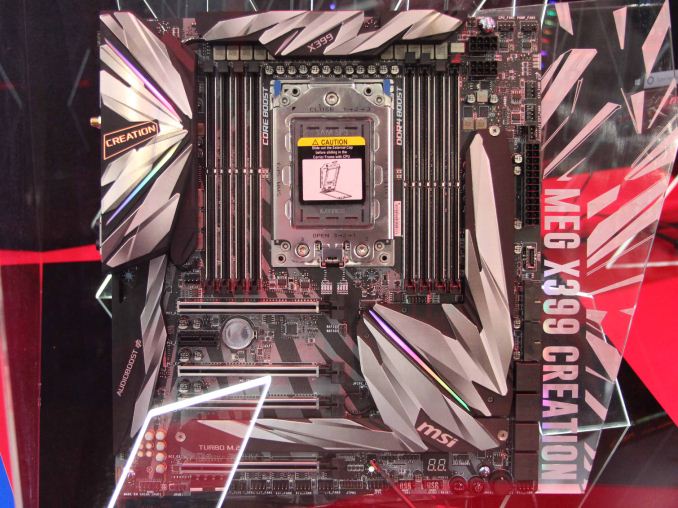
MSI's 19-phase X399 Refresh Motherboard
The launch for these new processors, according to our moles is in early August. This aligns with what AMD stated at the beginning of the year at CES, and is almost a year from the original Threadripper launch.
Pricing on the processors is set to be revealed either today or closer to the launch time. We will update this piece as more information comes in.
It will be interesting if AMD is going to go through the ‘unboxing’ embargo this time around, or just jump straight to full performance reviews. As always, come to AnandTech for the full story.
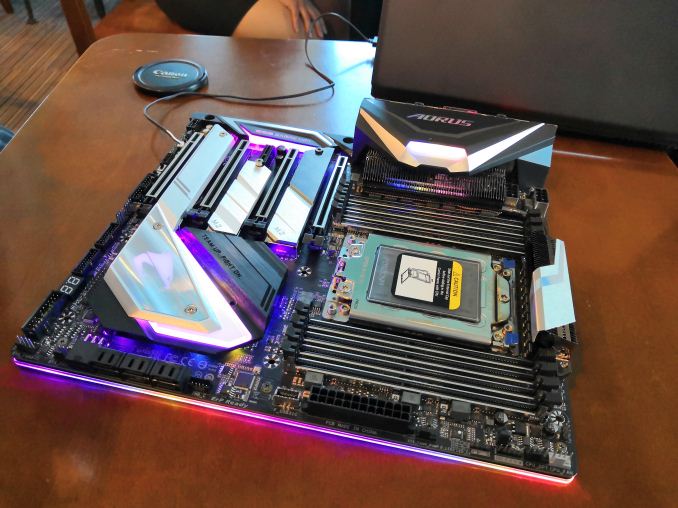
GIGABYTE's new X399 Refresh Motherboard
| Want to keep up to date with all of our Computex 2018 Coverage? | ||||||
 Laptops |
 Hardware |
 Chips |
||||
| Follow AnandTech's breaking news here! | ||||||


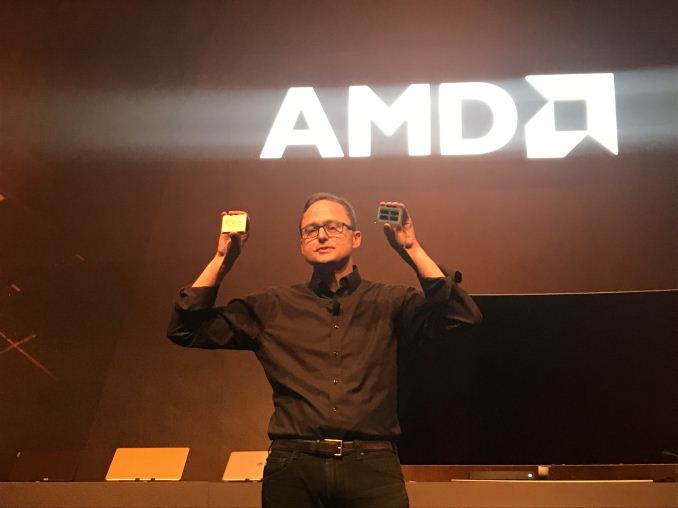
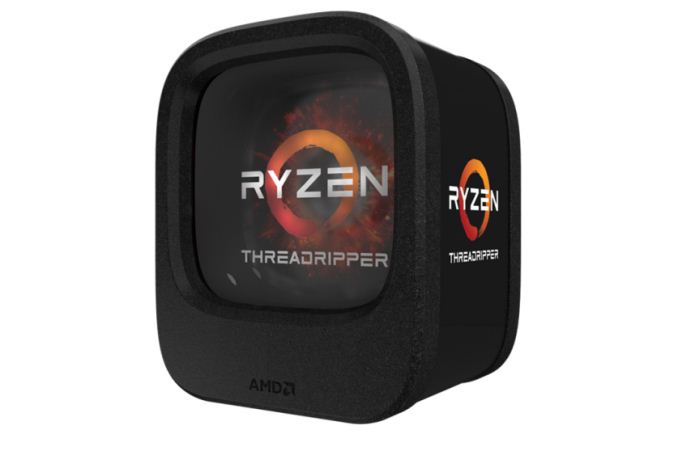
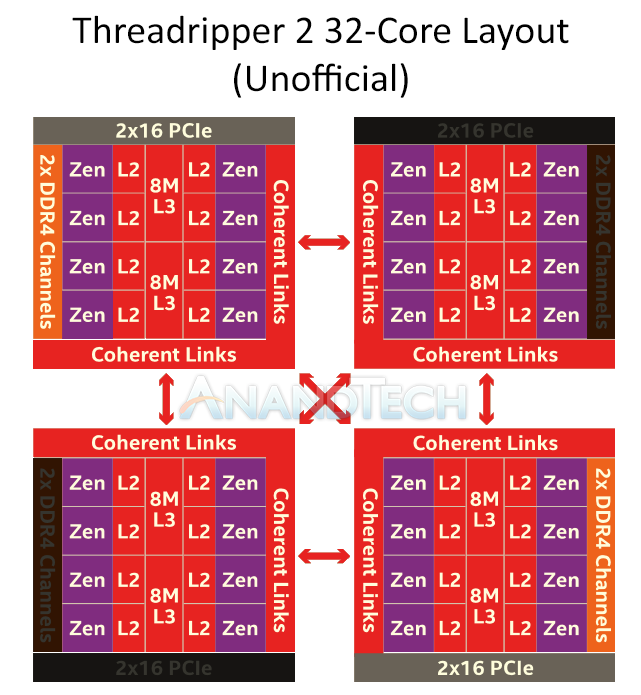
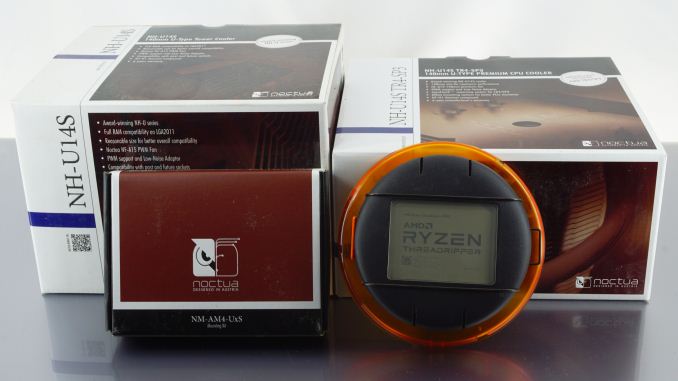














203 Comments
View All Comments
Colin1497 - Wednesday, June 6, 2018 - link
Are you writing your own OS? If so, then yes, absolutely, make sure you rewrite your scheduler to deal with this. Commercially available OSes already are there. Windows has had NUMA support for what, a decade? More?peevee - Wednesday, June 6, 2018 - link
NUMA support in the OS is not enough to get to normal scaling. Apps have to be written in a certain way, and for many many platforms/languages (except for C and C++) it is not even realistically possible. Ask me how I know.peevee - Wednesday, June 6, 2018 - link
This is UNBALANCED NUMA though. Very different from the normal one. If they would assign one channel each, at least NUMA-aware memory-latency-dependent applications would have a chance to work OK on 32-64 threads.Although most NUMA-aware apps would be designed to depend on throughput and not latency, and in the latter case 2x2 or 4x1 is the same on 32+ threads, while 16- will have double of low-latency bandwidth if happily assigned by OS (or AMD-aware code - unlikely except in AMD-influenced tests) to the better cores.
rhysiam - Wednesday, June 6, 2018 - link
Who cares how AMD decide to arrange their memory controllers? What matters is the performance. Given that Ian already raised concerns about memory latency in this launch article, we can be pretty confident he'll be exploring it in detail once he gets his hands on one of these CPUs. If Threadripper 2 suffers from high memory latency and that significantly impacts performance in real-world workloads then I'm trusting Ian to find out about it and help us all make an informed purchasing decision.Here's the thing though, 12 months ago today purchasing a premium HEDT machine meant spending $1700 on a 10 Core Broadwell E 6950X with an all-core turbo of around 3.5Ghz. Surely it's reasonable for people to get a little excited that come September (~ 15 months later) you'll will be able to get a 32 core CPU that may even come in at a similar price-point (maybe $2K, we'll have to wait and see). Sure, AMD's multi-die approach has some drawbacks. Reviews will ultimately tell us how significant those drawbacks are. But in terms of benefits, that multi-die approach gives us access to a 32 Core CPU. That's a hell of a tradeoff and one that many enthusiasts would happily take I suspect.
ET - Wednesday, June 6, 2018 - link
If two dies get two channels and a channel dies, would other dies channel channels to the dies who channel died?(Not a serious question; just punning.)
mkaibear - Wednesday, June 6, 2018 - link
^whose(but respect for the pun ;)
Cooe - Wednesday, June 6, 2018 - link
*facepalm* well thankfully the chip wasn't designed like that!(Both the actual IMC's themselves & all DMA support have been disabled on the 2 newly active dies; meaning that max memory distance is no different than on Threadripper v1. Only potential cache hops have had their max possible distance pushed up to EPYC levels, but that's still a worst case scenario as Windows & increasing #'s of game's & program's have been updated for Ryzen to minimize cross-CCX & cross-die cache & memory operations as much as possible).
Maybe try reading the article first before you post?
Or at the very least do some most basic levels of critical thinking (X399 = only 4x memory channels = only 2x enabled IMC's)....
drajitshnew - Tuesday, June 5, 2018 - link
In your article it is mentioned "usually it is suggested to just go buy an EPYC for those workloads)". Correct me if I'm wrong but is there any commercially available motherboard that has more than 56 lanes.rhysiam - Wednesday, June 6, 2018 - link
Your post got me curious so I went looking. This Gigabyte Newegg board seems to offer 88 PCIe lanes to PCIe slots, plus a bunch of extras you'd expect on a high end board (including dual 10Gb): https://www.newegg.com/Product/Product.aspx?Item=N...drajitshnew - Wednesday, June 6, 2018 - link
Thanks